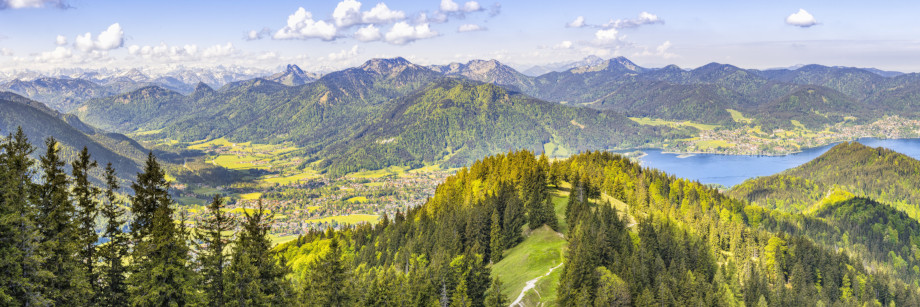13.02.2024
Views: 911
Welcome to the station! From 1872 it was possible to reach Toruń, a year later to Olsztyn, then to Olsztynek, from 1893 to Malbork and Elbląg (via Miłomłyn and Zalewo), from 1909 through Morąg to Orneta, and from 1910 to Działdowa through Samborowo and Dąbrówno. You could also check in your postcard from here, drink a beer from the local "Viktoria" brewery or listen to the stories of Hansik Stockel - a baggage handler who knew (almost) everything that was happening in the city. What will he tell you about old Ostróda?

The current view of the station.
Hansik must have heard something about Paul Dahlke. He was born on January 25, 1865, in a house at 7 Bergstraße Street (today Czarnieckiego Street), as the first of five siblings of a Prussian official. Paul was very famous in Germany and beyond, as a homeopathic doctor, writer, translator and propagator of Buddhism. In the town of Westerland on the island of Sylt (near the border of Germany and Denmark), Dahlke built the first Buddhist center in Europe. We celebrated the 150th anniversary of his birth very solemnly. Find a plaque dedicated to Paul Dahlke in the park opposite the cemetery at Czarniecki Street.

The plaque dedicated to Paul Dahlke.
Paul Dahlke is, of course, not the only famous figure associated with Ostróda. The next person is Hans Hellmut Kirst - one of the popular German writers and a member of the PEN Club. Over the course of 39 years, he wrote as many as 59 books, including the series of books "08/15...", "God Sleeps in Masuria", "Conversations with my dog Antek", "Night of the Generals". They gained international fame.
"08/15..." - and what is that title? The numbers 08/15 identify the model of the machine gun used in the German army. For many years its construction remained basically the same and therefore the term "Null-acht-fünfzehn" (i.e. zero-eight-fifteen) acquired an idiomatic meaning in colloquial German. It more or less corresponds to the expression "the same thing again" or "according to the old pattern". By giving this title to his book, Kirst wanted to emphasize that the militarism and Nazi chauvinism of the Third Reich were not new phenomena and were a continuation of the inglorious traditions of the Wilhelm era. And where can you find his family home? It's a small house on Schillerstrasse - near the Catholic church on the hill. It's easy to get there, because on the same street there is the largest Protestant church in the city with a double tower.

The current view of the Protestant church.
The image of another lord can even be found on coins. He is the President of the Reich, Paul von Hindenburg, born in Poznań in 1847. He really liked crayfish soup, but where was the best one? Of course, in the hotel at Wodna Street (Wasserstrasse). Hindenburg loved coming to Ostróda and staying at Kühl's Hotel - it was the most elegant hotel in the city. Prince Frederick William Fryderyk Karol also spent the night here.

The current view of the Kühl's Hotel.
Hindenburg did not come to Ostróda for tourist purposes. The girls' junior high school housed the headquarters of the German Army, where, together with General Erich Ludendorff, he worked on plans for the 1914 campaign. On this occasion, the street where the school was located was named Ludendorffstrasse, and Hindenburg received the title of honorary citizen of the city. The campaign was carried out in such a way that the city was not destroyed. Interestingly, Hindenburg drove past the Post Office building on his way to his headquarters. It was one of the most modern facilities in the Reich. There were no common windows here, and customers were served at counters modeled on shop counters.

The current view of the Post Office building.
At that time there were a lot of attractions on the Market Square, or rather on two of them - the Old and the New. In one shoe store, foot size could be measured using X-rays. There was always a lot of traffic in the market square, especially on market day or when troops were stationed, e.g. signal troops during World War I. Hindenburg certainly also visited the Town Hall.

The current view of the Town Hall.
During the celebration of the 600th anniversary of the city (1935), an inscription was placed above the gate: "How many entered here, how many left and how many more will be? What do we know about them and ourselves, only one thing - we are wanderers!" After the war, the city was almost completely burned down... Hansik is worried as he runs away from the city - will those who come after us remember the old Ostróda, will anyone know what "08/15" meant?
If you want to learn many other interesting facts about Ostróda, I cordially invite you to watch my e-tour titled "Walk around Ostróda", which is available at: https://camaica.com/walk-around-ostroda.


 English
English Polski
Polski Français
Français Español
Español Deutsch
Deutsch Italiano
Italiano Português
Português العربية
العربية 简体中文
简体中文 日本語
日本語 हिन्दी
हिन्दी Русский
Русский USD
USD EUR
EUR JPY
JPY GBP
GBP CHF
CHF PLN
PLN CNY
CNY AUD
AUD CAD
CAD


